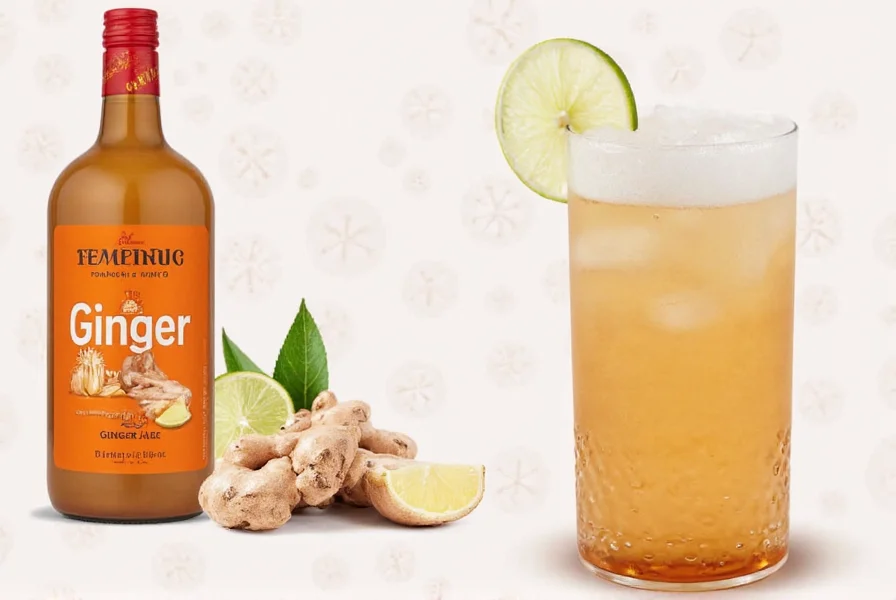Does Ginger Ale Actually Help with Nausea?
Many people reach for ginger ale when feeling queasy, but does this popular home remedy actually work? The answer lies in understanding the difference between traditional ginger preparations and modern commercial ginger ales.
The Science Behind Ginger and Nausea Relief
Ginger (Zingiber officinale) contains active compounds called gingerols and shogaols that interact with serotonin receptors in the digestive tract and brain. Multiple clinical studies support ginger's effectiveness for various types of nausea:
| Type of Nausea | Research Findings | Recommended Ginger Dosage |
|---|---|---|
| Morning sickness | 70-85% reduction in symptoms compared to placebo | 1-1.5g daily in divided doses |
| Post-operative nausea | Significant reduction in severity and frequency | 1g before surgery |
| Chemotherapy-induced nausea | Moderate effectiveness as complementary treatment | 0.5-1g daily during treatment |
| General motion sickness | Mild to moderate effectiveness | 0.5-1g 30 minutes before travel |
These findings come from systematic reviews published in reputable medical journals including the American Journal of Obstetrics and Gynecology and Supportive Care in Cancer.
Why Most Commercial Ginger Ales Fall Short
Traditional ginger ale recipes contained substantial amounts of real ginger root. Modern versions, however, typically contain:
- Less than 0.1% actual ginger extract
- High fructose corn syrup as the primary ingredient
- Artificial ginger flavoring instead of real ginger
- Carbonation that may worsen nausea for some people
The limited ginger content in most store-bought ginger ales means they deliver far less of the active compounds needed for therapeutic effects. Research published in Food Science & Nutrition found that popular commercial brands contain only 1-3mg of gingerols per serving, while effective doses start around 250mg.

Choosing Effective Ginger Products for Nausea
If you're using ginger for nausea relief, consider these options ranked by effectiveness:
- Pure ginger supplements (standardized to 5% gingerols) - most consistent dosing
- Fresh ginger tea made from 1-2 inches of grated ginger steeped for 10 minutes
- Traditional-style ginger ales with real ginger extract listed in ingredients
- Standard commercial ginger ale - minimal benefit due to low ginger content
When selecting ginger ale specifically, look for brands that list "real ginger" or "ginger root extract" among the first five ingredients. Canada Dry and Schweppes, despite their popularity, contain negligible amounts of actual ginger according to independent laboratory testing.
How to Use Ginger Effectively for Nausea Relief
For optimal results when using ginger for nausea:
- Start with small doses (250-500mg) to assess tolerance
- Consume ginger 30 minutes before potential nausea triggers
- For pregnancy-related nausea, consult your healthcare provider first
- Combine with other non-pharmacological approaches like acupressure
- Avoid extremely cold ginger beverages if nausea stems from stomach irritation
Limitations and When to Seek Medical Help
Ginger works best for mild to moderate nausea. Seek medical attention if you experience:
- Nausea lasting more than 48 hours
- Inability to keep fluids down for 12+ hours
- Signs of dehydration (dark urine, dizziness)
- Nausea accompanied by severe abdominal pain
- Vomiting blood or material resembling coffee grounds
Ginger may interact with blood thinners and diabetes medications, so consult your doctor before using ginger therapeutically if you take prescription medications.
Effective Alternatives to Ginger Ale for Nausea
When ginger ale isn't providing relief, consider these evidence-based alternatives:
- Peppermint tea - effective for digestive upset and IBS-related nausea
- Acupressure wristbands - clinically shown to reduce motion sickness
- BRAT diet (bananas, rice, applesauce, toast) for post-vomiting recovery
- Controlled breathing exercises to activate the parasympathetic nervous system
- Cold compress on the forehead or back of neck for immediate symptom relief

Practical Tips for Immediate Nausea Relief
When nausea strikes unexpectedly, these immediate actions can help:
- Sip small amounts of room-temperature ginger tea rather than cold ginger ale
- Try the "ginger sniff" technique - inhale deeply from a piece of fresh ginger
- Apply pressure to the P6 acupressure point on your inner wrist
- Avoid strong odors and opt for bland, dry foods once you can tolerate eating
- Rest in a semi-upright position rather than lying flat
Frequently Asked Questions
Does regular ginger ale help with nausea or is it just a myth?
Regular commercial ginger ale provides minimal nausea relief because most brands contain very little actual ginger (typically less than 0.1%) and high amounts of sugar. The ginger content in most store-bought ginger ales is too low to deliver therapeutic effects, though the carbonation and mild flavor may offer some psychological comfort.
What's the difference between regular and 'real' ginger ale for nausea?
Real ginger ale contains actual ginger root extract as a primary ingredient, typically delivering 5-10mg of active ginger compounds per serving. Regular commercial ginger ale uses artificial ginger flavoring with negligible ginger content (1-3mg per serving), while effective therapeutic doses start at 250mg. Brands like Reed's and Bruce's Ginger Ale contain significantly more real ginger than mainstream options.
How much ginger do I need for nausea relief?
For effective nausea relief, research shows you need 250-1000mg of ginger (standardized to 5% gingerols). This is equivalent to 1-2 grams of fresh ginger, 1-2 cups of strong ginger tea, or a therapeutic ginger supplement. Most commercial ginger ales contain less than 5mg of actual ginger compounds per serving, making them ineffective as a primary treatment.
Can ginger ale help with morning sickness during pregnancy?
While ginger is generally considered safe for pregnancy-related nausea, most commercial ginger ales aren't effective due to low ginger content. If using ginger for morning sickness, opt for ginger supplements (250mg 4x daily) or fresh ginger tea after consulting your healthcare provider. Avoid ginger products with added sugars if you have gestational diabetes concerns.
When should I not use ginger for nausea?
Avoid ginger if you're taking blood thinners like warfarin, have gallstone disease, or are scheduled for surgery within two weeks. Ginger may increase bleeding risk in these situations. Also skip ginger if your nausea comes with severe abdominal pain, fever, or vomiting blood, as these require immediate medical attention rather than home remedies.










 浙公网安备
33010002000092号
浙公网安备
33010002000092号 浙B2-20120091-4
浙B2-20120091-4